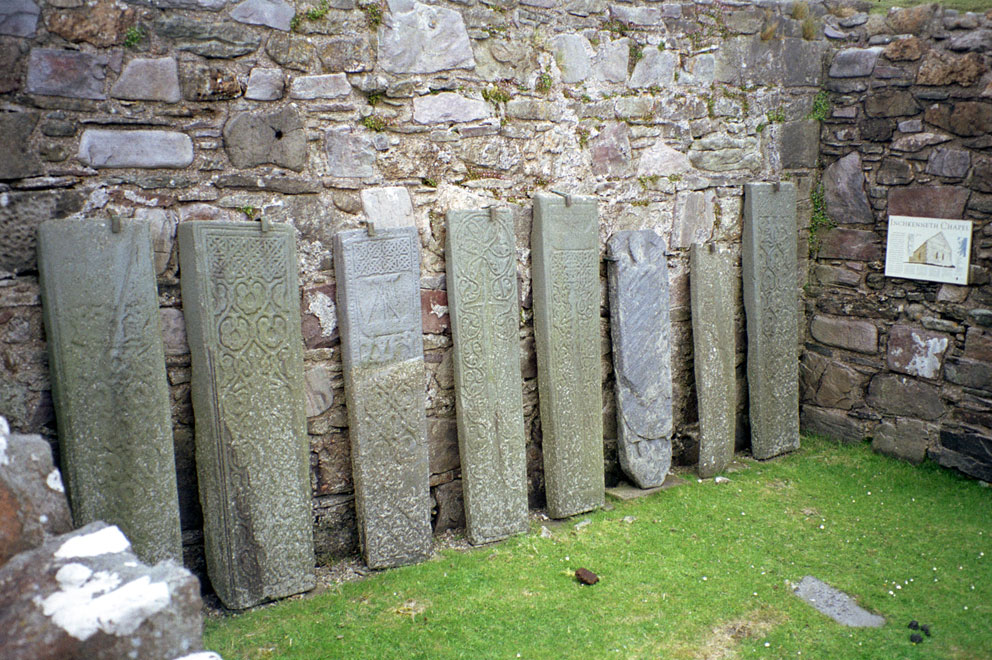Standing tall on the north end of Kerrera is this memorial to David Hutcheson. In 1851 Hutcheson, along with his brother Alexander, and David MacBrayne, became the owners of the steam ship company that survives today as Caledonian MacBrayne. I climbed up to the monument, intent on sitting on its massive base. But the five-foot-high fence that surrounded it, tipped with needle-sharp iron spikes, looked too evil to climb. The wording on the memorial reads: ‘Erected by a grateful public in memory of David Hutcheson by whose energy and enterprise the benefits of greatly improved steam navigation were conferred on the West Highlands and Islands of Scotland’.
It's great fun to sit here and watch Hutcheson's legacy sail by, either the 'Isle of Mull' on the short crossing to Mull, or the 'Clansman' on its long trek to Barra. Thousands of people see this monument every day, but few ever see the other memorial to Hutcheson, the one that marks his grave, high up in the cemetery just north of Oban.
It's great fun to sit here and watch Hutcheson's legacy sail by, either the 'Isle of Mull' on the short crossing to Mull, or the 'Clansman' on its long trek to Barra. Thousands of people see this monument every day, but few ever see the other memorial to Hutcheson, the one that marks his grave, high up in the cemetery just north of Oban.




















































